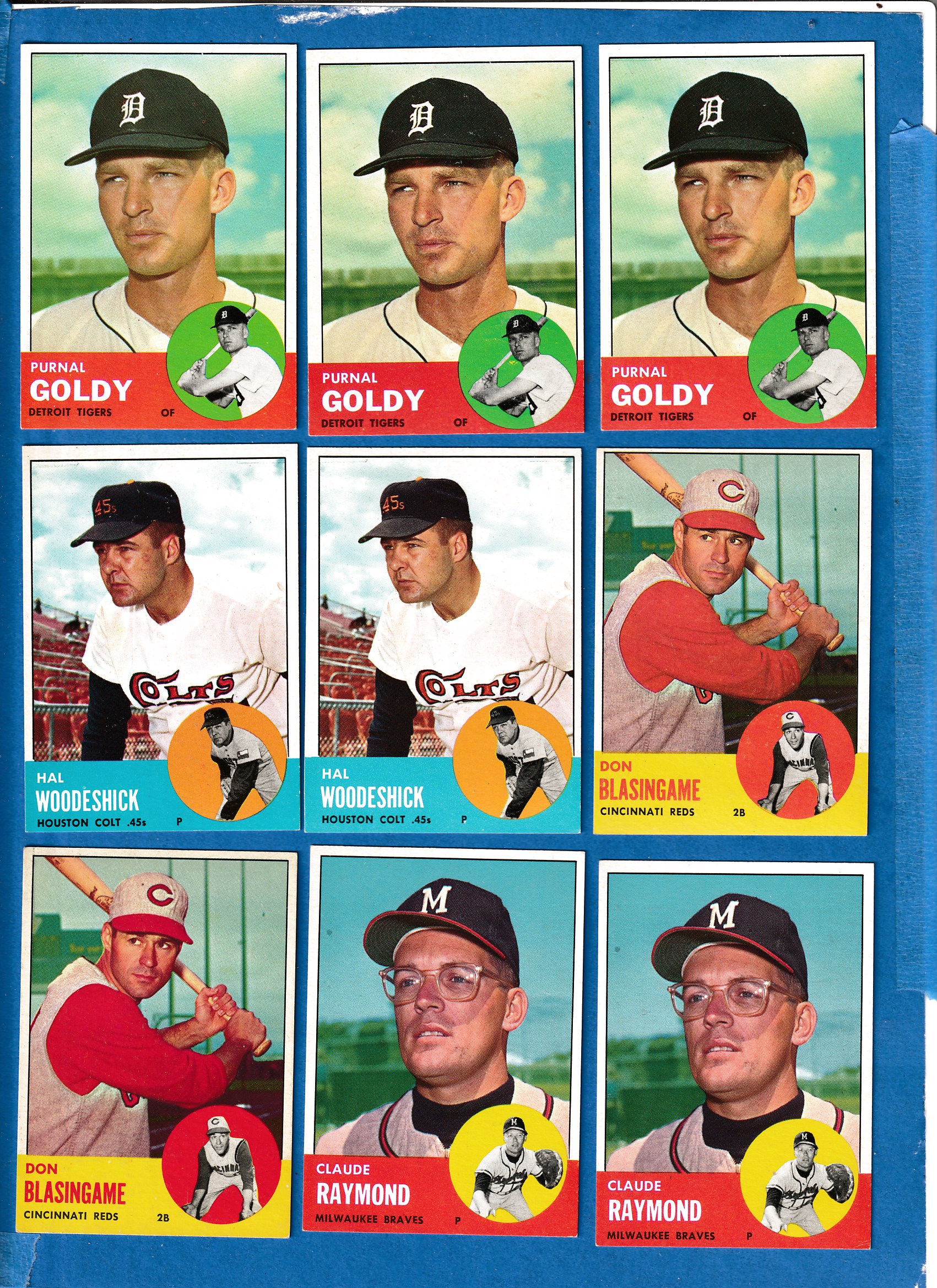1963 Topps #519 Claude Raymond SCARCEST MID SERIES (Braves)


Please wander around the website for more info, prices, values & images
on vintage baseball, football, basketball, hockey, sport and non-sports cards.
1978 O-Pee-Chee (OPC) Baseball |

Values of Team Autographed/Signed Baseballs
The value of Autographed Team Balls depends on several items
including:
Click for our current
Autographed/Signed Team Baseball inventory
* The Team or Players * Baseballs signed by more popular teams like the Yankees or Mets tend to be more valuable. Also balls with autographs from popular Hall of Famers increase the value. Some team balls like the 1970's Cincinatti Reds or early Yankees balls have numerous Hall-of-Famers. * Condition of Baseball & Signatures * * Number of Autographs * For a ball to be considered a AUTOGRAPHED TEAM BALL it needs to have the autographs of the Manager (often on the sweet spot), all starters and a good number of other players. Obviously, the more autographs the better. * Authentication * Unfortunately in todays world, it's often best to be sure. Companies like PSA/DBA and UDA (Upper Deck Authenticated), JSA (James Spence) & Beckett provide authentication and Certificates of Authenticity (COA) thet can greatly increase a ball's value. Unfortunately, the cost for verification of team balls often is higher than the cost of the balls themselves. * Significance * Autographed team baseballs from pennant winners and championship teams tend to have much higher values. |

Cabinet Card Were oversized trading cards featuring paintings issued mostly 1910-1915.
Card Show is a gathering of dealers & collectors looking to buy/sell/trade sports cards and memorabilia.
Card Stock is the material a card is printed on. Usually paper-based, today companies play with the card stock and sometimes it appears to be wood or leather or see-thru acrylic ...
Cello Pack is a card pack whose wrapper is see-thru plastic. Usually the top & bottom cards are seen. Unopened cello packs showing major stars and rookies sell for heavy premiums.
Centering is the balance of the borders: top/bottom & left/right. On perfectly-centered cards, top/bottom borders match as do the left/right borders. Centering is presented as a set of numbers & directions and often included with the grade. Perfectly-centered is "50/50 t/b" AND "50/50 l/r". As centering gets worse, one number increases and the other decreases. For example: 90/10 t/b is considered extremely off-center top to bottom. The numbers add up to 100 (50/50, 60/40, 90/10 ...).
Certificate Of Authenticity (COA) A document used to verify legitimacy of a collectible. NOTE: Keep in mind that COA's are easier to fake then autographs.
Common A card of a non-star player is considered a "Common" as opposed to cards of a star players or specialty/subset cards such as league leaders, teams cards, World Series cards...
Condition (Grade) Centering, corner wear, photo clarity, edges, creases, print flaws ... all combine to determine a card's condition or grade. Along with rarity/scarcity it is the major factor in a card's value.
Crease Defect usually caused by bending the card. Hard to see, or not, a crease lowers the card's grade (VG or lower) and greatly diminishes it's value.
